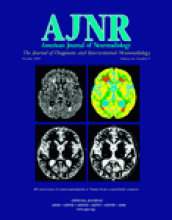Abstract
BACKGROUND AND PURPOSE: There is early evidence that diffusion-tensor imaging (DTI) is useful in demonstrating subtle white matter alterations in different diseases of brain. We hypothesize that DTI in several brain regions in human immunodeficiency virus–positive (HIV+) patients is useful in the early detection of HIV-related brain injury.
METHODS: MR imaging and DTI were performed in 60 HIV+ patients and in 30 controls. Fractional anisotropy (FA) and apparent diffusion coefficient (ADC; mm/s2) maps were generated and coregistered on T2-weighted images. Regions of interest were placed in the splenium and genu of the callosum, the frontal white matter, and the hippocampus. HIV+ patients were divided into those whose CD4 count were <250 cells/mm3 or >250 cells/mm3. According to plasma viral loads, patients were divided into those whose viral loads were <50 copies/mL, 50–100,000 copies/mL, or >100,000 copies/mL.
RESULTS: Statistically significant decrease of FA was found in the genu of the corpus callosum in HIV+ patients compared with controls. FA was reduced in the frontal white matter and hippocampi in HIV+ patients compared with controls. Differences, however, were not statistically significant. No statistically significant differences were found between the HIV+ groups for FA of the splenium or between these groups and the controls. ADC values were significantly increased in the genu of HIV+ patients when compared with controls and were also increased in other locations, but without statistical significance.
CONCLUSION: As used in this study, DTI was not helpful in identifying patients with early HIV infection.
- Copyright © American Society of Neuroradiology












